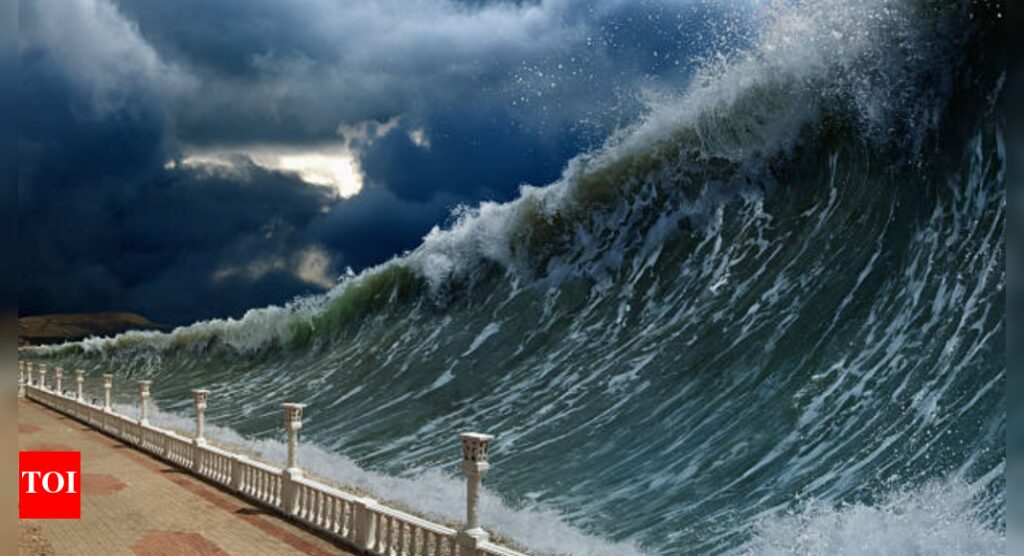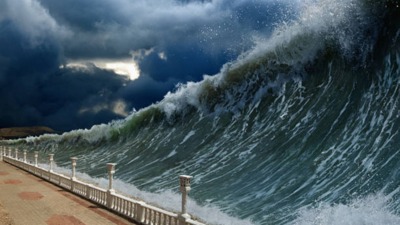Mega-Tsunami of 650 feet that shook the Earth for nine days: Chilling details

In September 2023, a colossal wave erupted from Greenland’s remote Dickson Fjord, sending seismic tremors across the globe for an unprecedented nine days. This wasn’t your typical tsunami; it was a mega-tsunami, towering over 650 feet high, triggered by a massive landslide that scientists are still studying to understand fully.
What happened?
On September 16, 2023, a mountain peak in eastern Greenland, standing 1.2 kilometers (nearly 4,000 feet) high, collapsed into the fjord below. This massive landslide involved approximately 25 million cubic meters of rock and ice—enough to fill 10,000 Olympic-sized swimming pools. The debris plunged into the fjord at speeds exceeding 160 km/h (100 mph), generating a wave that soared over 200 meters (656 feet) into the air.Unlike typical tsunamis, which dissipate quickly in open water, this wave was confined within the narrow, steep-walled fjord, causing it to rebound and oscillate in a phenomenon known as a seiche. These oscillations created rhythmic vibrations that were detected by seismic stations worldwide, leading to a global seismic signal that persisted for nine days. The event was so unique that scientists initially referred to it as an “unidentified seismic object” until further analysis identified its source.
Why did it happen?
The landslide was primarily triggered by climate change. Rising temperatures have led to the thinning and melting of glaciers in Greenland, destabilizing the mountains that once rested upon them. In this case, the collapse of the glacier beneath the mountain peak removed the support holding the rock and ice in place, leading to the catastrophic landslide.This event serves as a stark reminder of the far-reaching impacts of climate change, even in remote regions. It highlights how warming temperatures can destabilize landscapes and trigger natural disasters in areas previously considered stable.While the immediate area was uninhabited, the effects of the mega-tsunami were still felt. The wave damaged an unstaffed research station on Ella Island, located approximately 70 kilometers (43 miles) away. Additionally, the fjord’s unique topography caused the tsunami’s energy to remain concentrated, amplifying its effects and causing significant damage to the surrounding environment.The event also had cultural implications, as it destroyed several archaeological sites within the fjord, erasing parts of Greenland’s heritage. Fortunately, no human lives were lost, but the incident underscored the potential risks to communities and infrastructure in similar regions.Global implicationsThe seismic waves generated by the mega-tsunami were detected across the globe, from Alaska to Australia. This unprecedented event has prompted scientists to reconsider how such natural disasters are monitored and studied. The use of advanced technologies, such as satellite imagery and seismic data analysis, played a crucial role in understanding the event’s magnitude and implications.In response to the increasing frequency of such events, researchers are advocating for enhanced monitoring systems in Arctic regions. These systems would aim to detect early signs of glacier instability and landslide activity, providing valuable time to mitigate potential disasters.The 2023 mega-tsunami in Greenland’s Dickson Fjord was a rare and powerful natural event that demonstrated the interconnectedness of Earth’s systems. It highlighted the profound effects of climate change on even the most remote and seemingly stable environments. As scientists continue to study this event, it serves as a cautionary tale of the unforeseen consequences of a warming planet and the need for proactive measures to protect vulnerable regions from future disasters.








